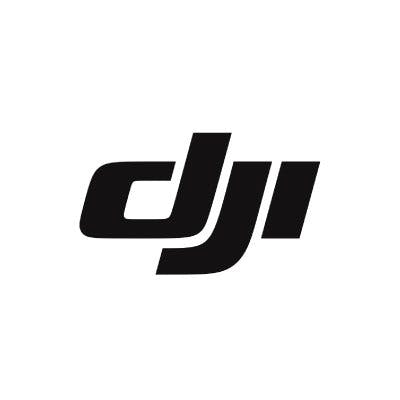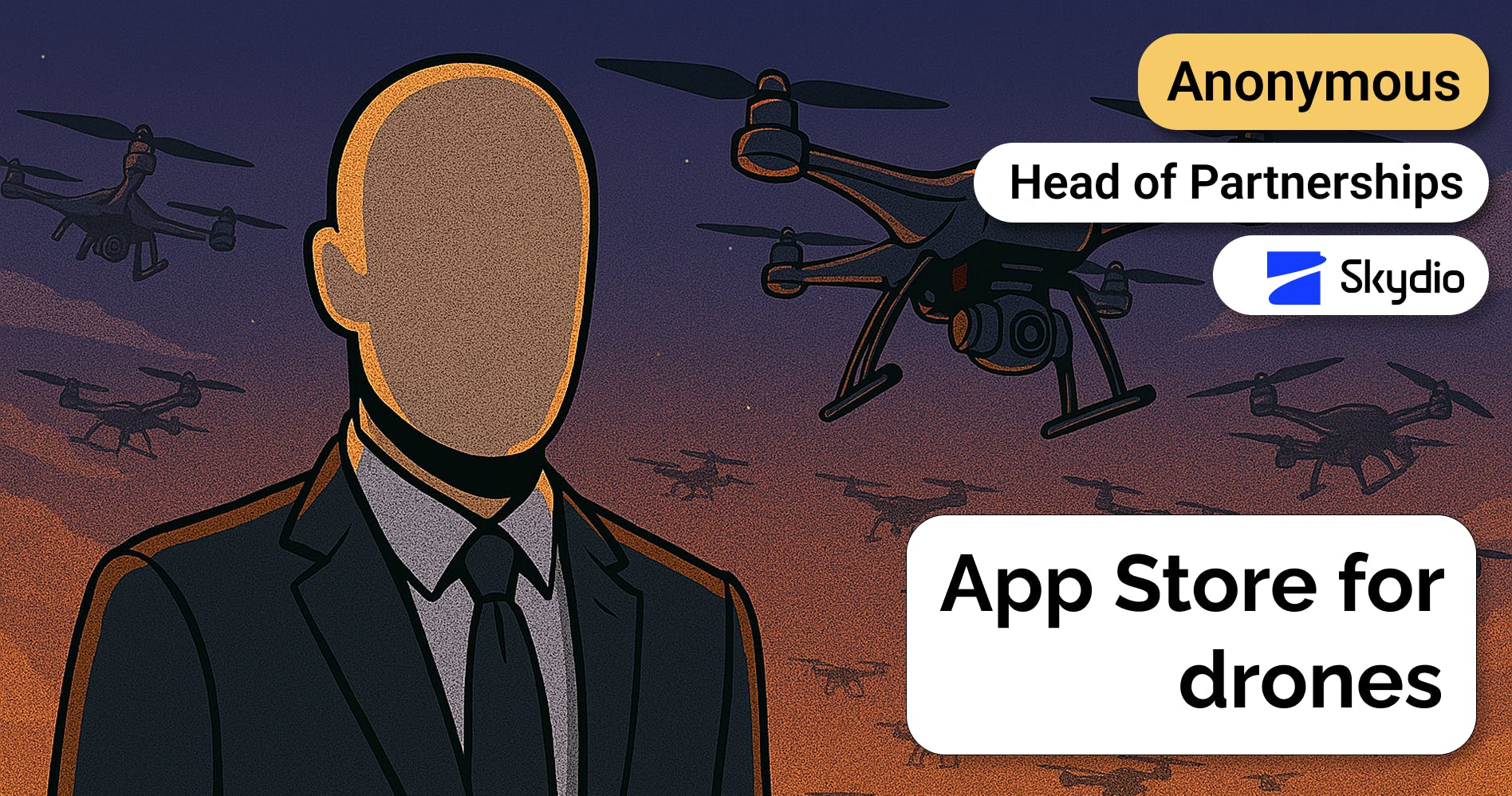Enterprise sales director at Skydio on drones as first responders
 Jan-Erik Asplund
Jan-Erik Asplund

Background
Key points via Sacra AI:
- Local and state markets are critical gateway to federal drone sales: State and local governments achieved BVLOS (Beyond Visual Line of Sight) waivers with Skydio’s help, which helped the company build toward federal sales, by creating a necessary coalition and regulatory clarity for larger Department of Defense and agency contracts.
- All-American supply chain became decisive competitive advantage post-2020: Following the DJI grounding and China concerns, Skydio's American-made components and transparent supply chain, combined with an early regulatory affairs team, allowed them to leapfrog competitors in the government market.
- Swarming and chain link operations represent the future of government drone procurement: Beyond current reconnaissance capabilities, agencies are demanding multi-drone coordination, handoff capabilities to overcome battery limitations, and potentially payload carrying abilities, signaling a shift from single-drone to networked operations.
Questions
- Can you briefly describe your role at Skydio and how it related to government or defense sales?
- Within the government market, were there any differences in how purchasing was handled by the Pentagon compared to other federal agencies or local and state governments? How important are local and state public safety markets versus federal?
- Can you tell us about the top use cases you observed across these government and defense markets? What specific applications or problems were they most looking to solve with Skydio's drones?
- How did procurement processes differ across defense versus non-defense agencies, and federal versus state/local agencies?
- How did these deals typically kick off? Was it mostly RFP driven or more about warm intros, demos, cold outreach?
- What factors mattered most to government buyers when evaluating a drone platform?
- Can you unpack what "capability" meant to those buyers?
- Was Skydio's software and autonomy a key differentiator in these deals?
- How often did agencies use Skydio's native software stack versus integrating with their own tools?
- Were there any specific feature gaps or limitations in Skydio's offerings that regularly came up?
- Did Skydio rely more on internal sales teams or channel partners to close government deals?
- Were certifications like Blue UAS important in the sales process?
- What were some of the most common obstacles to closing government deals?
- What do you think Skydio got right compared to their competitors in the government space?
- What level of support or training did government agencies typically require post-sale?
- What upcoming features or capabilities in the drone space do you think will be most important to government buyers?
- Were there any aspects of Skydio's product roadmap that government or defense agencies were especially interested in?
- Which agencies or public sector verticals do you see growing their drone spending significantly over the next 2-3 years?
- What would you say is the biggest misconception people have about selling drones to government buyers?
- Is there anything else you'd like to add that we haven't covered?
Interview
Can you briefly describe your role at Skydio and how it related to government or defense sales?
I was primarily an enterprise account director, which means I handled about 70-80% of my accounts in the private sector. But I did work with the public sector as well, including with the three-letter national security agencies. It was in a sales capacity, selling to government, oil and gas, and field companies.
Within the government market, were there any differences in how purchasing was handled by the Pentagon compared to other federal agencies or local and state governments? How important are local and state public safety markets versus federal?
Local and state were incredibly important to build the head of steam to sell into federal. A lot of the BVLOS waivers - the Beyond Visual Line of Sight waivers - were achieved at the local and state level that allowed for federal sales to happen. There was a separate team, a formal separate team that sold to Department of Defense, but I was definitely on those teams and saw the sales motions. So it was very important to get a coalition of state and local governments working together because of the regulations and waivers.
Can you tell us about the top use cases you observed across these government and defense markets? What specific applications or problems were they most looking to solve with Skydio's drones?
Because Skydio doesn't carry any payload, it was all reconnaissance, all inspection. On the enterprise side, there's a completely different use case. But drones as a first responder is massive. Also, drones in tactical situations where they're trying to get line of sight on a bad guy or a terrorist or something like that. Those would be the primary use cases for Skydio drones.
How did procurement processes differ across defense versus non-defense agencies, and federal versus state/local agencies?
Procurement from the federal side was a lot more rigorous. You had to have certain things as a company, certain indemnities, which obviously we would argue or go against and then settle on. The sales cycle is a lot longer. You would also have to prove things - for example, your supply chain had to be transparent, and you'd have to show that your supply chain didn't have any... basically, the brains of the operation had to be made in America, after the whole Huawei phone, China, and DJI grounding in 2020.
How did these deals typically kick off? Was it mostly RFP driven or more about warm intros, demos, cold outreach?
It would be some inbound because there would be a lot of requests - Skydio is a market leader. As far as outbound goes, it would be partnerships really leapfrogging with state and local into federal. We also had a head of regulatory and government affairs, and it went all the way up to our CEO, Adam. They were the ones that handled the highest level government contracts from a regulation standpoint and clearance standpoint. So it was a mixture of all, but there weren't a lot of people just cold calling the Department of Defense.
What factors mattered most to government buyers when evaluating a drone platform?
Cost and capabilities for sure. Cost is always going to be there, although less so when you're dealing with military technology. But capability is going to be massive - that's probably number one.
Can you unpack what "capability" meant to those buyers?
The top capabilities were autonomous flying - in other words, obstacle avoidance, being able to go around different corners, being able to avoid things like antennas, having really world-class camera setups used for detection sensors. Those are probably the top two.
Was Skydio's software and autonomy a key differentiator in these deals?
All three [software, hardware, compliance/cybersecurity] tied together. The security came from supply chain confidence, and the supply chain fed into the parts, which fed directly into the capability, which fed the autonomy. So the autonomy and the obstacle avoidance were the top two reasons, but the other factors played in.
How often did agencies use Skydio's native software stack versus integrating with their own tools?
The government always likes to integrate with their own tools, so I'd say 50/50. You had some agencies using stuff like Esri and some really even Google Maps. But primarily, it was feeding into their system of record. As far as application programming, coming back online for the office side of the house, there was usually a blend of post-processing - Pix4D and Bentley were two of the big names that were involved during my time there.
Were there any specific feature gaps or limitations in Skydio's offerings that regularly came up?
With buyers in general, they wanted a solution that was going to potentially house their information. We launched Skydio Cloud in summer of 2020, but that was a pretty limiting factor for government because they wanted to be able to have their own private cloud. We were trying to stand a government cloud up - I'm not sure if that happened; I had left before that was done.
Did Skydio rely more on internal sales teams or channel partners to close government deals?
I would say 50/50. We had definitely a big SLED team and fed team that was working to spearhead the deal. But then we also had Axon as a key partner getting us into deals and some other drone companies that serve the market. As far as I'm concerned, Axon was the biggest lubricant to helping us get into deals that we weren't already in within the government.
Were certifications like Blue UAS important in the sales process?
Yeah, in order to get through procurement, we would typically need to show all of our certifications and then be able to demonstrate the capabilities. That would entail that not only what we're telling them is correct, but they're seeing it themselves. So things like battery time, things like max flight speed, etcetera - there had to be written certification, Blue UAS, that type of stuff. But some of them were field demonstrable, and then some of them were just certification.
What were some of the most common obstacles to closing government deals?
The supply chain. Our supply chain had a glut in 2020, and we, just like a lot of companies in the marketplace because of the pandemic, had a lot of our parts sitting out on boats in the port of LA. So we had customers that were signing up agreements and then having to wait 6 months, 3 months to get their birds. The government got to be in the front of that line along with some of our early adopter customers. That would be one of the biggest limitations.
What do you think Skydio got right compared to their competitors in the government space?
Skydio latched onto the regulations immediately. Skydio always touted the all-American supply chain, all-American component parts, and really latched onto the patriotism, especially once the DJI drones were grounded, to leapfrog the competition. Also, I would say that standing up a regulatory affairs team was really massive. A lady named Jen Player was the head of regulatory affairs when I was there.
What level of support or training did government agencies typically require post-sale?
A lot. Typically, they would have drone enthusiasts who would act as their liaison to kind of train the trainer - be trained by our side and then be able to pass that down. We would also have online learnings and trainings, certifications, etcetera, so that we could also measure and help for customer success reasons with the different agencies.
What upcoming features or capabilities in the drone space do you think will be most important to government buyers?
Number one, I would say is swarming. Number two, being able to create a chain link - that's incredibly important for a lot of different buyers because of the limited battery life of drones. So being able to basically not hot swap in the air or anything, but have two drones where one picks up the signal from another, whether that be visually or otherwise, and then keeps on the path. The autonomous docking would probably be number three. The one kind of wildcard factor I've seen a little bit is the lack of a payload focus on Skydio drones. There hasn't been much focus on carrying payloads, and that's something I think in the future might be something that Skydio is going to be looking at.
Were there any aspects of Skydio's product roadmap that government or defense agencies were especially interested in?
Skydio really became the number one drone for reconnaissance missions - short reconnaissance missions - because of the efficiency, because of the dependability, the autonomy of flying, and again, the obstacle avoidance is great. This is before there was nighttime flying as well. Certain features would be on the nice-to-have list and some features would be in the roadmap that they would want, and then we would kind of help co-develop those with them.
Which agencies or public sector verticals do you see growing their drone spending significantly over the next 2-3 years?
I would say that the major agencies in my opinion such as CIA, FBI, ICE would be a really big one given the current political environment. Border Patrol, Customs and Border - those would be the biggest. You're going to continue to see state and local, but I think with the trend that you're seeing in nationalization of law enforcement here in the United States is going to dictate that a lot of these things like drones are probably going to start being more driven and regulated by the federal government. Which means that they'll probably be less organic demand, or maybe there'll still be the organic demand that'll be driven top-down in my opinion.
What would you say is the biggest misconception people have about selling drones to government buyers?
I would just say that Skydio is - and again, I don't work for Skydio anymore - but I would say that Skydio is going to continue to lead the pack because they got involved so early in the government space.
Is there anything else you'd like to add that we haven't covered?
Disclaimers
This transcript is for information purposes only and does not constitute advice of any type or trade recommendation and should not form the basis of any investment decision. Sacra accepts no liability for the transcript or for any errors, omissions or inaccuracies in respect of it. The views of the experts expressed in the transcript are those of the experts and they are not endorsed by, nor do they represent the opinion of Sacra. Sacra reserves all copyright, intellectual property rights in the transcript. Any modification, copying, displaying, distributing, transmitting, publishing, licensing, creating derivative works from, or selling any transcript is strictly prohibited.






